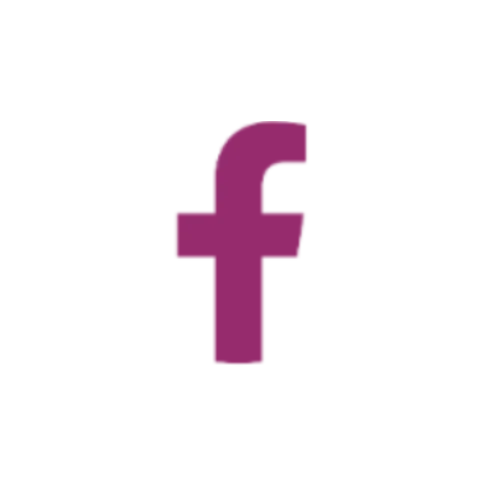Our services are currently being offered at a special promotion of a 20% discount on the final price valid only, from September 1 to September 31. Use code HPAC10 at checkout to claim!
BLOG

Exploring the Different Levels of Reiki Certification: Level 1, 2, 3, and Master
Exploring the Different Levels of Reiki Certification: Level 1, 2, 3, and Master
Reiki, a Japanese healing technique, has grown in popularity over the years as more people seek holistic approaches to wellness and spiritual growth. Rooted in the idea of channeling universal life energy, Reiki can help bring about physical, emotional, and spiritual healing. If you’re interested in becoming a Reiki practitioner, it’s important to understand the different levels of certification involved in mastering this ancient practice. Each level offers unique teachings, attunements, and responsibilities, taking you further on your journey to becoming a Reiki Master.
In this article, we’ll explore the four main levels of Reiki certification: Level 1, Level 2, Level 3 (or Advanced Reiki Training), and the Master level.

Level 1: The Foundation of Reiki Healing (Shoden)
Level 1 is the entry point for anyone interested in learning Reiki. Also known as Shoden, this level focuses on self-healing and the basics of channeling energy for others. It’s often described as the level where you “wake up” to the energy within and around you.
Key Learnings in Level 1:
Introduction to Reiki: Understanding the history, principles, and philosophy of Reiki.
Energy Awareness: Learning how to sense and feel energy in yourself and others.
Hand Positions: Practicing the standard hand positions used for self-treatment and healing others.
Self-Healing Techniques: Emphasis on self-care and using Reiki to heal yourself before you begin working on others.
The Attunement:
The Reiki Master provides an attunement that connects the student to the Reiki energy, allowing them to channel it. This process opens the energy channels, enabling the practitioner to access the universal life force energy for healing. After Level 1, students are encouraged to practice regularly to build confidence and a deeper connection to the energy.
Level 2: Expanding Your Reiki Practice (Okuden)
Level 2, also known as Okuden, delves deeper into the practice of Reiki, empowering practitioners to offer healing to others more effectively. This level introduces symbols that enhance the practitioner’s ability to channel energy and offers techniques for distance healing.
Key Learnings in Level 2:
Reiki Symbols: Introduction to the three sacred Reiki symbols: the Power Symbol (Cho Ku Rei), the Mental/Emotional Symbol (Sei He Ki), and the Distance Symbol (Hon Sha Ze Sho Nen). Each symbol has specific functions, such as intensifying the energy, promoting emotional healing, or sending energy across distances.
Distance Healing: Learning how to send Reiki energy to people who aren’t physically present, making it possible to offer healing across time and space.
Enhancing Healing Sessions: Understanding how to combine the symbols with hand positions to strengthen and focus the healing energy.
The Attunement:
In this level, another attunement is given, which strengthens the connection to Reiki energy and empowers the practitioner to use the symbols effectively. With this attunement, practitioners often feel a significant increase in the energy they can channel.

Level 3: Advanced Reiki Training (Shinpiden)
Level 3 is often divided into two parts: Advanced Reiki Training (ART) and the Master Level. The ART portion serves as a bridge between Level 2 and the Master Level, offering deeper spiritual growth and advanced healing techniques.
Key Learnings in Level 3 (ART):
Master Symbol: Introduction to the Master Symbol (Dai Ko Myo), which is used for deep spiritual healing and can amplify the power of all the other symbols.
Advanced Healing Techniques: Learning techniques such as psychic surgery, aura clearing, and using Reiki for spiritual guidance.
Intuitive Development: Enhancing your ability to work intuitively during healing sessions, trusting your instincts, and sensing where energy is needed most.
The Attunement:
The attunement in ART further opens the practitioner’s energy channels, enhancing their ability to connect with and channel Reiki energy at a much higher frequency. This level also prepares practitioners for the responsibilities that come with the Master Level.
Level 3/Master: The Path to Mastery (Shinpiden Continued)
The Master Level is the final stage of Reiki certification. It’s designed for those who wish to fully embody Reiki energy and pass on the teachings to others. Becoming a Reiki Master involves a deep commitment to personal growth, healing, and teaching.
Key Learnings in the Master Level:
Teaching Reiki: Learning how to perform attunements and teach Reiki to others. This includes understanding the responsibilities of a Reiki Master and the ethics involved in guiding students.
Master Symbols and Techniques: Further exploration of the Master Symbol and additional advanced techniques for healing and spiritual growth.
Spiritual Development: Focusing on your ongoing spiritual journey and using Reiki as a tool for enlightenment and service to others.
The Final Attunement:
The Master attunement connects you fully to the Reiki energy, allowing you to initiate others into the practice. With this attunement, you gain the ability to pass on attunements to your students and guide them on their own Reiki paths.
Which Level is Right for You?
The level you choose depends on your goals. If you’re interested in self-healing and supporting loved ones, Level 1 may be sufficient. If you want to practice Reiki professionally, Level 2 is essential. Advanced healing techniques and spiritual growth are emphasized in Level 3, while those called to teach and lead others will naturally gravitate toward the Master Level.
BLOG

Exploring the Different Levels of Reiki Certification: Level 1, 2, 3, and Master
Exploring the Different Levels of Reiki Certification: Level 1, 2, 3, and Master
Reiki, a Japanese healing technique, has grown in popularity over the years as more people seek holistic approaches to wellness and spiritual growth. Rooted in the idea of channeling universal life energy, Reiki can help bring about physical, emotional, and spiritual healing. If you’re interested in becoming a Reiki practitioner, it’s important to understand the different levels of certification involved in mastering this ancient practice. Each level offers unique teachings, attunements, and responsibilities, taking you further on your journey to becoming a Reiki Master.
In this article, we’ll explore the four main levels of Reiki certification: Level 1, Level 2, Level 3 (or Advanced Reiki Training), and the Master level.

Level 1: The Foundation of Reiki Healing (Shoden)
Level 1 is the entry point for anyone interested in learning Reiki. Also known as Shoden, this level focuses on self-healing and the basics of channeling energy for others. It’s often described as the level where you “wake up” to the energy within and around you.
Key Learnings in Level 1:
Introduction to Reiki: Understanding the history, principles, and philosophy of Reiki.
Energy Awareness: Learning how to sense and feel energy in yourself and others.
Hand Positions: Practicing the standard hand positions used for self-treatment and healing others.
Self-Healing Techniques: Emphasis on self-care and using Reiki to heal yourself before you begin working on others.
The Attunement:
The Reiki Master provides an attunement that connects the student to the Reiki energy, allowing them to channel it. This process opens the energy channels, enabling the practitioner to access the universal life force energy for healing. After Level 1, students are encouraged to practice regularly to build confidence and a deeper connection to the energy.
Level 2: Expanding Your Reiki Practice (Okuden)
Level 2, also known as Okuden, delves deeper into the practice of Reiki, empowering practitioners to offer healing to others more effectively. This level introduces symbols that enhance the practitioner’s ability to channel energy and offers techniques for distance healing.
Key Learnings in Level 2:
Reiki Symbols: Introduction to the three sacred Reiki symbols: the Power Symbol (Cho Ku Rei), the Mental/Emotional Symbol (Sei He Ki), and the Distance Symbol (Hon Sha Ze Sho Nen). Each symbol has specific functions, such as intensifying the energy, promoting emotional healing, or sending energy across distances.
Distance Healing: Learning how to send Reiki energy to people who aren’t physically present, making it possible to offer healing across time and space.
Enhancing Healing Sessions: Understanding how to combine the symbols with hand positions to strengthen and focus the healing energy.
The Attunement:
In this level, another attunement is given, which strengthens the connection to Reiki energy and empowers the practitioner to use the symbols effectively. With this attunement, practitioners often feel a significant increase in the energy they can channel.

Level 3: Advanced Reiki Training (Shinpiden)
Level 3 is often divided into two parts: Advanced Reiki Training (ART) and the Master Level. The ART portion serves as a bridge between Level 2 and the Master Level, offering deeper spiritual growth and advanced healing techniques.
Key Learnings in Level 3 (ART):
Master Symbol: Introduction to the Master Symbol (Dai Ko Myo), which is used for deep spiritual healing and can amplify the power of all the other symbols.
Advanced Healing Techniques: Learning techniques such as psychic surgery, aura clearing, and using Reiki for spiritual guidance.
Intuitive Development: Enhancing your ability to work intuitively during healing sessions, trusting your instincts, and sensing where energy is needed most.
The Attunement:
The attunement in ART further opens the practitioner’s energy channels, enhancing their ability to connect with and channel Reiki energy at a much higher frequency. This level also prepares practitioners for the responsibilities that come with the Master Level.
Level 3/Master: The Path to Mastery (Shinpiden Continued)
The Master Level is the final stage of Reiki certification. It’s designed for those who wish to fully embody Reiki energy and pass on the teachings to others. Becoming a Reiki Master involves a deep commitment to personal growth, healing, and teaching.
Key Learnings in the Master Level:
Teaching Reiki: Learning how to perform attunements and teach Reiki to others. This includes understanding the responsibilities of a Reiki Master and the ethics involved in guiding students.
Master Symbols and Techniques: Further exploration of the Master Symbol and additional advanced techniques for healing and spiritual growth.
Spiritual Development: Focusing on your ongoing spiritual journey and using Reiki as a tool for enlightenment and service to others.
The Final Attunement:
The Master attunement connects you fully to the Reiki energy, allowing you to initiate others into the practice. With this attunement, you gain the ability to pass on attunements to your students and guide them on their own Reiki paths.
Which Level is Right for You?
The level you choose depends on your goals. If you’re interested in self-healing and supporting loved ones, Level 1 may be sufficient. If you want to practice Reiki professionally, Level 2 is essential. Advanced healing techniques and spiritual growth are emphasized in Level 3, while those called to teach and lead others will naturally gravitate toward the Master Level.








